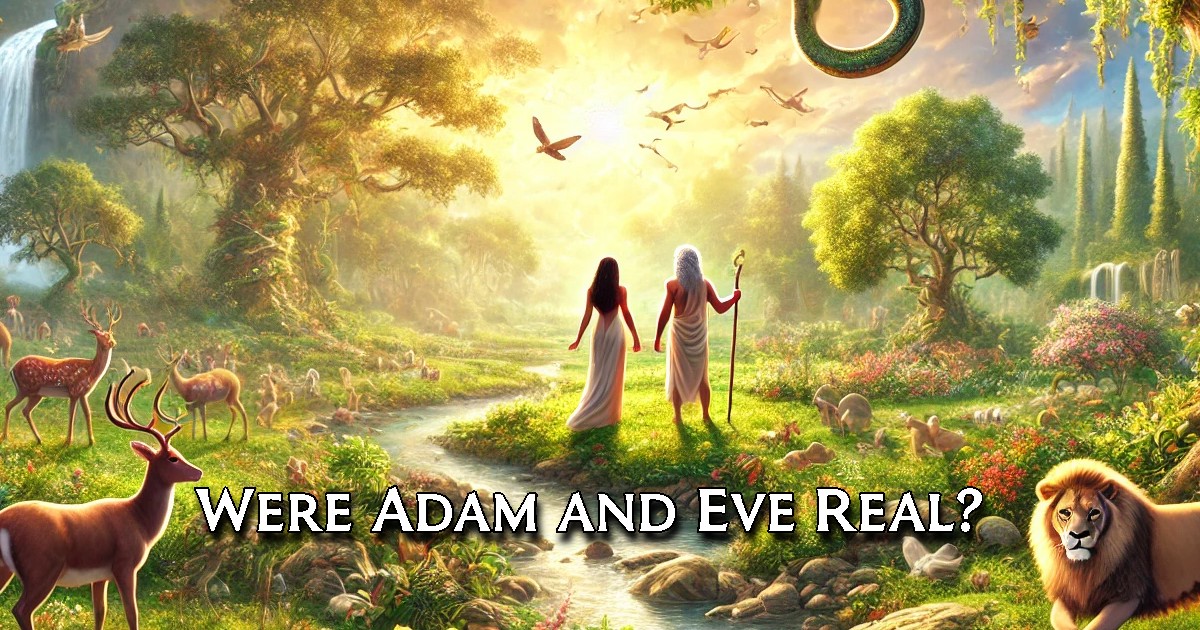Imagine opening your family photo album and finding a picture of two people you’ve never seen before—naked, chilling with a snake, and looking vaguely guilty. That’s basically the vibe when we ask, “Were Adam and Eve real people?”
According to the Documentary Hypothesis (aka the “CSI: Ancient Texts” approach), the Genesis story wasn’t penned by one author sitting in a tent with divine Wi-Fi. Nope. It’s a mashup of sources: J (Yahwist), E (Elohist), P (Priestly), and D (Deuteronomist), each adding their own flair like ancient ghostwriters competing for bestseller status.
So, were they real? Probably not in the “Hey, nice fig leaf” sense. They’re more like legendary mascots for humanity’s debut album, Original Sin and the Consequences. Their story wasn’t designed for historical accuracy—it was the moral TED Talk of its time.
Scientific Evidence: The Evolutionary Perspective
Modern science, however, paints a very different picture of human origins. Genetic research has debunked the possibility of a single human couple being the ancestors of all living humans. Studies of mitochondrial DNA (tracing maternal lineage) and Y-chromosome DNA (paternal lineage) reveal that humanity descends from a population of at least several thousand individuals, not just two.
The concept of “Mitochondrial Eve” and “Y-chromosomal Adam” often causes confusion. While these terms refer to the most recent common ancestors in our genetic lineages, they did not live at the same time and were part of larger populations. This genetic evidence supports the theory of evolution, with Homo sapiens emerging gradually over hundreds of thousands of years.
The Earliest Texts: Mythology and Allegory
Examining the earliest biblical texts alongside ancient Near Eastern literature reveals striking parallels. The Genesis creation story shares themes with older Mesopotamian myths, such as the Epic of Gilgamesh and the Enuma Elish. For example, the motif of a paradise lost due to human disobedience and the quest for immortality echoes through these ancient tales.
Scholars suggest that the Adam and Eve narrative is an allegorical story, crafted to explain profound truths about the human condition, morality, and our relationship with the divine. The contradictions within Genesis itself—such as the two differing creation accounts in Genesis 1 and 2—indicate that these stories were compiled from multiple sources with varying theological perspectives.
Faith vs Evidence
So, were Adam and Eve real people? If we seek historical, biological, and archaeological confirmation, the answer is likely no. However, as symbolic figures, they embody timeless truths about human nature, ethics, and spirituality. For many, this realization does not diminish the Bible’s significance but rather enriches its role as a profound tapestry of human reflection on the divine.
Sources
The Human Genome Project – Research on genetic diversity and human ancestry.
“Sapiens: A Brief History of Humankind” by Yuval Noah Harari (2011)
“The Evolution of Adam” by Peter Enns (2012)
The Epic of Gilgamesh and Enuma Elish – Ancient Mesopotamian texts
National Geographic, “The Search for Adam and Eve,” January 1988
“The Bible Unearthed” by Israel Finkelstein and Neil Asher Silberman (2001).
Challenging traditional beliefs can be unsettling, but it also opens the door to deeper understanding, inviting us to explore the profound intersection of faith, history, and science.

